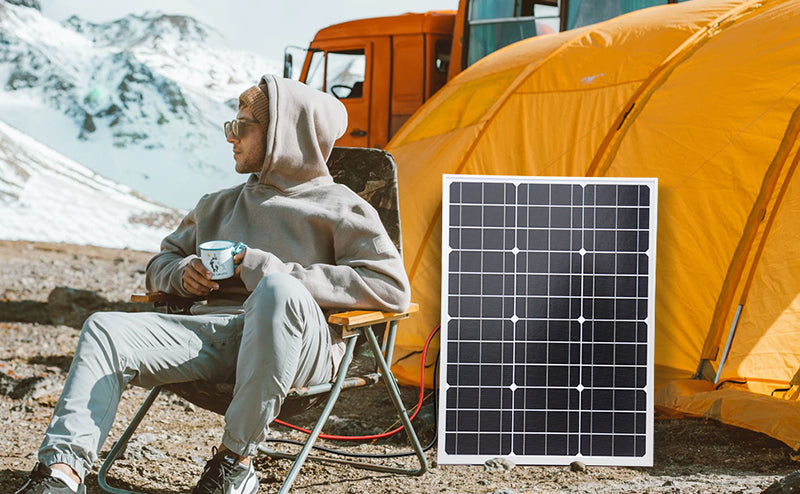Generally speaking, the life cycle of photovoltaic power stations is more than 20 years, which is an ideal expected value without considering or excluding other destructive factors. Natural risks caused by climate and geology always exist. In addition, China has a vast terrain and complex and diverse climate types, such as rainstorms, floods, thunderstorms, typhoons, snowstorms, sandstorms, high temperatures and other extreme meteorological disasters from time to time, This brings potential risks to the smooth operation of the photovoltaic power station. Once the risk comes, the service life of the photovoltaic power station will be greatly reduced.
After a disaster, power stations are often in a mess and suffer heavy losses. Some power station owners have purchased property insurance in advance, which can minimize property losses. However, it is an unavoidable fact that indirect expenses such as electricity losses and follow-up transformation of power stations caused by the disaster are not within the scope of claims, and this loss can only be borne by the owners themselves. In order to effectively reduce the loss of the power station, I would like to introduce how to effectively prevent natural disasters.
Strengthen monitoring and early warning to prevent high temperature
In the summer, the peak period of power generation is expected. Due to the characteristics of the PV module itself, the power generation of the module will continue to decline as the temperature increases. In summer, the temperature coefficient of PV module is about -0.4%, which means that the output power will be lost by about 0.4% when the module temperature rises by 1 ℃. The continuous rise of temperature will not only bring about the loss of power generation income, but also accelerate the aging of component packaging materials, power station cables, etc., affecting the service life of the power station.
What's more, inverter is also prone to heatstroke in hot weather. After direct sunlight exposure, the internal temperature of the inverter can quickly rise to more than 80 ℃. If there is no good heat dissipation, ventilation or sun protection measures at this time, the high temperature will lead to derating output of the inverter, which will directly affect the power generation of the power station. If the temperature continues to rise and exceeds the normal operating temperature range of the inverter, an inverter alarm shutdown will also be triggered. Therefore, it is necessary to install a sunscreen on the inverter in hot weather.
Strengthen monitoring and early warning to prevent strong convection
After summer, strong convective weather such as strong wind, rainstorm, hail, lightning and so on is easy to occur, and the destructive power is amazing in a short time, which brings severe challenges to the safety of the power station.
Extreme strong wind weather
under extreme strong wind conditions, components may be overturned or even fall from high altitude, causing damage to the property of the power station and the safety of surrounding personnel. Therefore, it is necessary to take reinforcement measures for the power station in advance to prevent trouble before it happens. For example, increase the foundation counterweight and connect the adjacent string stone piers with angle steel to improve the wind resistance.

Thunderstorm weather
The power station equipment that may lead to poor grounding is damaged by lightning. Therefore, in addition to regularly carrying out lightning protection detection for the power station every year, it is also necessary to carry out grounding resistance test for key equipment before the thunderstorm season to complete the elimination of lightning hazards.
Rainstorm weather
In case of continuous rainstorm, it may also cause waterlogging in the power station. At this time, in addition to paying attention to the drainage of the power station itself, pay close attention to the array deformation caused by foundation settlement and collapse of the PV array to prevent damage to the components. Inverter, cable and other equipment are immersed in water for a long time, which is prone to poor insulation and other faults, and sudden contact is easy to cause electric shock accidents. After the rainfall, the power plant will be cut off. After professional operation and maintenance personnel take anti electric shock measures, the power plant will be comprehensively checked, and power generation will be resumed after confirmation.
Hail weather
In case of hail disaster, the insurance company shall be contacted at the first time to preserve the damage evidence, and then the hidden cracks of impacted components with intact appearance shall be checked through I-V detection, El detection and other means, and the equipment performance shall be evaluated and rectified.

Strengthen monitoring and early warning to prevent sandstorm and snow
Winter in northern China is a season of frequent sand and dust. It is necessary to pay attention to the weather forecast in time. According to the speed and degree of dust accumulation, I-V detection and dust intelligent detection software and hardware systems are used to determine the timing of dust cleaning, and appropriate cleaning methods such as dry cleaning and water cleaning are selected to ensure the power generation of the power station. In snowy weather, pay attention to the thickness of snow cover on the components at all times, and clean them in time to prevent the components from collapsing due to snow. After the snow stops, organize personnel in time to clear the snow on the components as soon as possible, restore the system power generation and reduce the power generation loss.
The above are the tests or risks faced by photovoltaic power stations in summer. It is the responsibility of every photovoltaic person to master the necessary knowledge of power station operation and maintenance and effectively prevent the damage caused by extreme weather. Welcome to SOLARPARTS to get to know more information:
Phone: +86-13923729619 Fax: +86-755-28720791
WhatsApp: +86-13923729619 Wechat: 13510027129
Email address: Philip@isolarparts.com
Homepage: www.isolarparts.com



